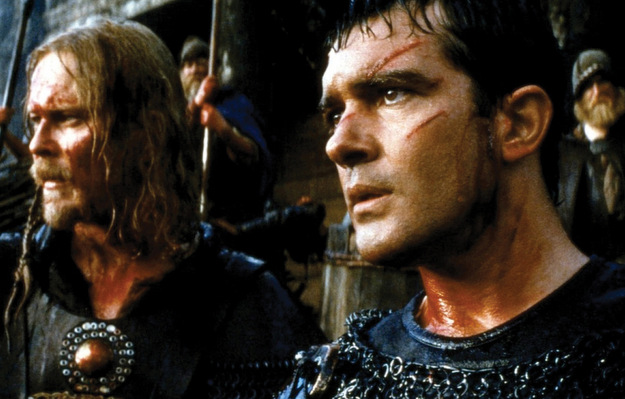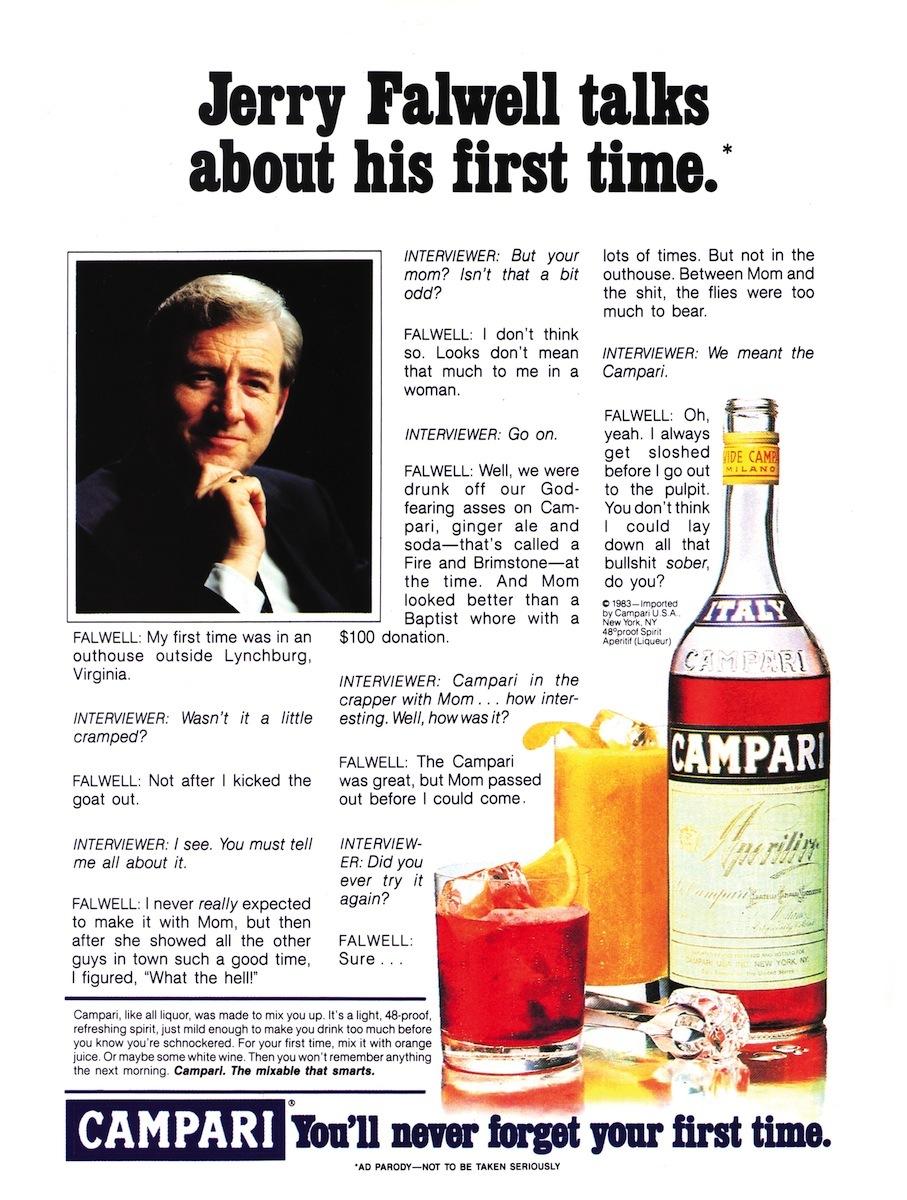Halfway through the 1999 film The 13th Warrior, the Northmen’s much-feared serpent of fire is seen in the distance, working its way around the mountain towards them. One of the Northmen bangs a gong to warn the villagers, and as the villagers seek shelter the stranger among them, an Arab named Ahmed Ibn Fahdlan, starts to believe that maybe the mythological dragon could be real after all. Ibn Fahdlan races towards a small girl trapped near the head of the dragon, and as he reaches her he sees that it is not a dragon, but hundreds of cavalry with torches. The illusion revealed, he picks up the girl and races back to the safety of the castle. He is met by his Northman friend, Herger, who laughs at the revelation and proclaims, “I rather prefer a dragon”. It is the moment in the film where the two cultures, Arabic and Northmen, start working together against the third culture, the Wendol.
The 13th Warrior centers around the voyage of an Arab, traveling in Northern Europe, who meets a group of Northmen, or Vikings. Throughout the film, the customs of each culture are compared, mostly through the experiences of Ibn Fahdlan and Herger. Together they learn about each other, and what they learn is contrasted against the rage of the Wendol. This paper examines the cultural portrayals from the film and its characters, and the basis of the film in both established literature and real history.
A Summary of The 13th Warrior
To discuss The 13th Warrior, it is important to have a background of the origins of the film in both literature and history. The film is based on the novel Eaters of the Dead by author Michael Crichton, and Crichton wrote in the afterward to the book that it was written on a dare, to make a story that some considered boring into an exciting novel3. Eaters of the Dead was based on the epic poem Beowulf, framed by the writings of the real Ahmed Ibn Fadlan. The film and Eaters of the Dead both follow the general story as Crichton reinterpreted the epic poem as if based not on mythology, but real events. By adding the historical travels of Ibn Fadlan, The Risalah of Ibn Fadlan, both Eaters of the Dead and the film offered a realistic take on the more mythological Beowulf tale.
The 13th Warrior began by following The Risalah of Ibn Fadlan quite closely, as Ibn Fahdlan, slightly renamed from both Eaters of the Dead and The Risalah of Ibn Fadlan, is forced to leave his country after some indiscretions. He is exiled, becoming an ambassador to Northern Europe, and after being harried by Tartar bandits ends up finding an encampment of Northmen. He and his companion see the culture of the Northmen, and the often wild differences between Arabic and Northmen cultures. One of the Northmen, Herger, is able to understand Latin, and explains the events around them to Ibn Fahdlan. The story leaves The Risalah of Ibn Fadlan here and enters into the realm of Beowulf, when Ibn Fahdlan is chosen as the thirteenth warrior for a mission to save a kingdom further north from monsters.
Ibn Fahdlan and Herger are the audience’s surrogates in the events that unfold. As each learns about the other’s culture, both must defend themselves, and the group, from the evil Wendol. Based on Beowulf, the remaining two-thirds of the film highlights the group’s fight against the Wendol, the mother of the Wendol, and the perceived dragon. The film, and Eaters of the Dead, stray from the fantastical nature of Beowulf and more into a historical aspect, as the Wendol are neither magical nor have a dragon, but are actually the last remaining tribe of Neanderthals3. The mythological monsters are replaced with real elements, the details clouded as they were passed down from century to century.
Cultural Differences and Conflicts
The character of Ibn Fahdlan was portrayed, especially in the first half of the film, as the “fish out of water” stereotype, attempting to keep up with the Northmen in their environment. While the Northmen drank large amounts of alcohol, he refused according to his Muslim beliefs. He wore traditional clothing, and he came across as feeling more advanced than the pagan Northmen. The first third of the film followed The Risalah of Ibn Fadlan closely, as Ibn Fahdlan watched a chieftain’s burial, and the next morning was subject to a huge cultural difference. As the Northmen woke up, their morning ritual was to wash in a common bowl that a woman brought around to all the men. This clearly offended Ibn Fahdlan and his companion, as Muslims must be physically clean, washing with clean water2. The scene followed The Risalah of Ibn Fadlan directly, as the real Ibn Fadlan remarked at how disgusting the Rus, or Vikings, were:
Every day, without fail, they wash their faces and heads in the filthiest and most foul water possible. A slave girl comes every morning carrying a large bowl filled with water. She presents it to her master, and he washes his hands and face, and the hair of his head which he also washes, and combs it into the bowl with a comb. Then he blows his nose and spits into it, and indeed there is no filthy deed that he refrains from doing in that water. When he has finished whatever is necessary, the girl carries the bowl to the one next to him, who engages in the same activity as his colleague.7.
The Northmen were also depicted as dealing with cultural issues, often making fun of Ibn Fahdlan and sticking to the opposing side of the “fish out of water” stereotype. Especially in the early parts of the film, the masculinity of the Northmen put them at odds with Ibn Fahdlan. The Vikings on Film6 observed the typical movie character of the manly viking, seen as being very masculine, filled with testosterone and being rude and noisy. In The 13th Warrior, characters taunt Ibn Fahdlan’s horse and call it a small dog, poke fun at his smaller sword, and goad him into arguments about his mother. The Northmen dismiss him even before they can understand languages together. As Ibn Fahdlan first tells them his long name, Ahmed Ibn Fahdlan Ibn Al Abbas Ibn Rashid Ibn Hamad, they simply dismiss his attempts by calling him “Eben.” Ibn Fahdlan does not back down, continuing to try to fit in. He jumps his horse over a temporary high gate, proving to the Northmen that he is more than what he seems.
The film does a good job of gradually reversing the stereotypical trends, each side begins to respect the other and they become more integrated. Viking Rus: Studies of Scandinavians in Eastern Europe discussed the travels of the real Ibn Fadlan, describing the funerary process that Ibn Fadlan witnessed first hand and explored the long event over multiple days of drinking heavily5. The film offered similar scenes, albeit in a much shorter timeframe, of a very similar chieftain’s funerary rites. Much as Viking Rus explained, Ibn Fahdlan in the film observed the entire ritual, but did not necessarily make any judgments about the Northmen and their methods. The film continually progresses to the point where both sides find the value of the other, and appreciate their differences. Unlike many other Viking films, The 13th Warrior explored a group of Vikings that found teamwork, and the value that a member brought to the group, as the most important factors6. This effect grows stronger throughout the film, as the storyline of the Wendol emerges.
The main cultural differences of the film come about as the Northmen and Ibn Fahdlan worked together to defend themselves, and counterattack, against the Wendol. In the afterward of Eaters of the Dead, Crichton explained that the Wendol were the last remnants of the Neanderthals, and in both the film and the novel they are presented as a savage, archaic tribe3. The film portrays the murderous Wendol as believing they are bears, and they attack the Northmen violently. Crichton observed that the notion of the Wendols being Neanderthals, still existing alongside modern humans, was a little more palatable in 1994 than in its original release date of 1976. But “Neandertal Demise”8 continued to hold to the idea that Neanderthals died out around 40,000 years ago, and it is a theory that is firmly rooted in today’s science. For about 10,000 years, between 50,000 and 40,000 years ago, modern humans and Neanderthals did overlap, but no evidence of Neanderthals after this time exists8. It may be why the link is not mentioned in the film, though the cultural differences in the film itself do not really need the specific link to work.
While the differences between Arab and Viking worlds are easily understood, when it comes to the Wendol all that the story requires is the difference between the archaic savages and the more modern Arab and Viking cultures. Crichton researched what was known at the time of the book’s original publication about Neanderthals, but the overall culture of the Neanderthals was not understood well. The film explored the simplicity of an older culture, based more on the typical idea of proto-humans. They lived in caves, barely had language, and were exceptionally violent to outsiders. The culture clash becomes less about Arabs and Vikings, and more about modern humans versus an ancient past. The Wendol are not like us, and the Northmen are not like them, and conflict arises from the differences.
Conclusion
The 13th Warrior offered an intriguing look at the travels of an Arab in Northern Europe, who came across a much different Viking culture. The film progressed through the customs of each culture, mostly through the experiences of Ibn Fahdlan and Herger. They worked together to learn about each other, and what they learned contrasted with the savagery of the Wendol. The cultural portrayals from the film and its characters, and the basis of the film itself, existed in the established literature of Beowulf and the real history of The Risalah of Ibn Fadlan. Where Beowulf was simply a fantasy, The 13th Warrior offered a realistic, culturally interesting portrayal of the historic possibilities of the myth, combined with the perceived truths of the Vikings as written objectively by an Arabic outsider in the same era.
References
- Alexander, M. (1973). Beowulf: a verse translation. Harmondsworth, England: Penguin.
- Al-Fayez, G., Awadalla, A., Arikawa, H., Templer, D. I., & Hutton, S. (2009). Body elimination attitude family resemblance in Kuwait. International Journal Of Psychology, 44(6), 410-417
- Crichton, M. (1994). A new collection of three novels. New York, NY: Wings Books.
- Dubrow, E. (Executive Producer), Vajna, A. (Executive Producer), & McTiernan, J. (Director). (1999). The 13th warrior [Motion Picture]. U.S.A.: Touchstone Pictures.
- Duczko, W. (2004). Viking rus: Studies on the presence of Scandinavians in eastern europe. Leiden, Netherlands: Brill.
- Harty, K. J. (2011). The vikings on film: Essays on depictions of the nordic middle ages. Jefferson, NC: McFarland.
- McKeithen, J. (1979). The risalah of ibn fadlan: An annotated translation with introduction (order no. 8008223). Available from ProQuest Dissertations & Theses Global. (302921148).
- Villa, P., & Roebroeks, W. (2014). Neandertal demise: An archaeological analysis of the modern human superiority complex. Plos ONE, 9(4), 1-10. doi:10.1371/journal.pone.0096424


